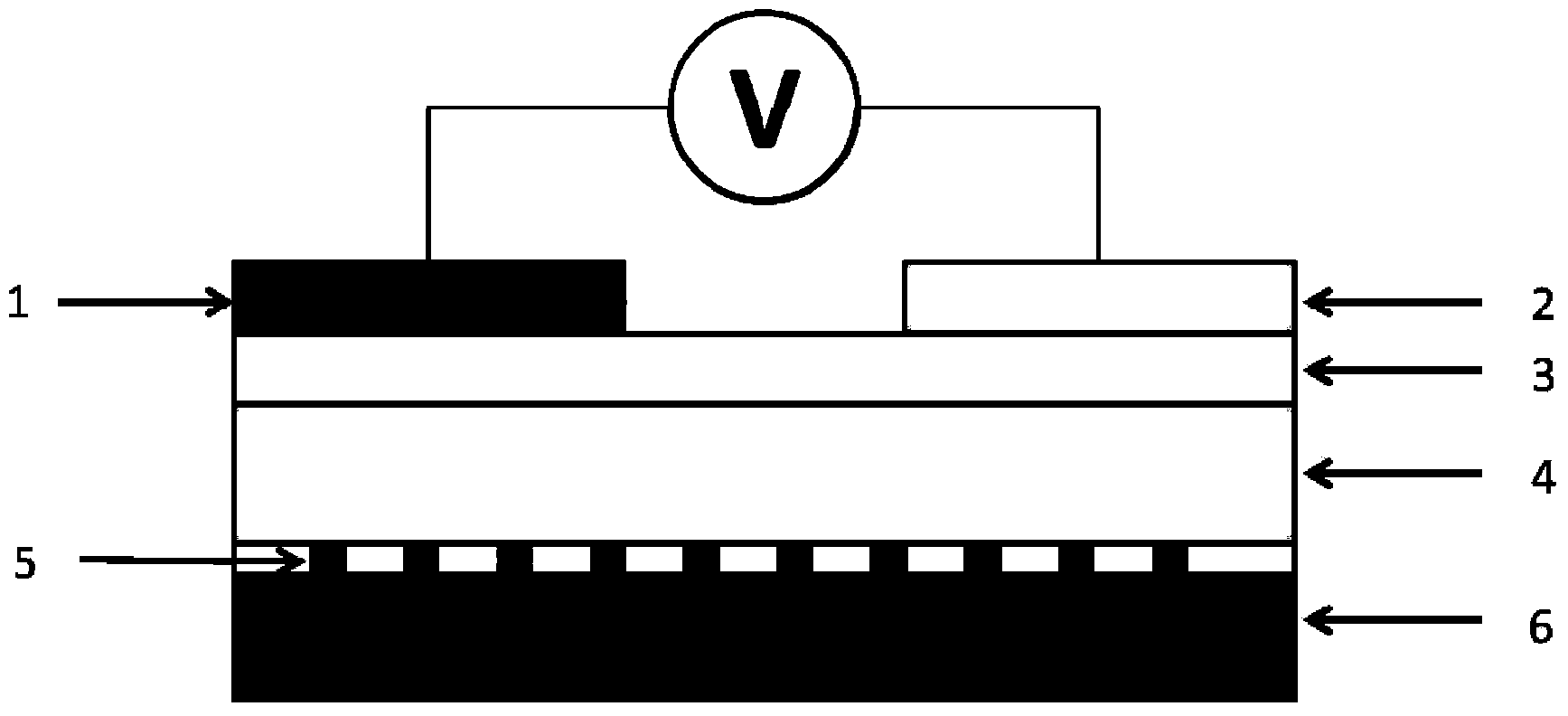YSZ (Yttria Stabilization Zirconia)-based mixed potential type NO2 sensor with high-efficiency three-phase boundary and preparation method thereof
A hybrid potential type and sensor technology, which is applied in instruments, scientific instruments, and material analysis through electromagnetic means, can solve problems such as endangering human health and air pollution, and achieve cost saving, good mechanical strength, and easy promotion.
- Summary
- Abstract
- Description
- Claims
- Application Information
AI Technical Summary
Problems solved by technology
Method used
Image
Examples
Embodiment 1
[0079] In the above YSZ powder, additionally add PMMA with a powder mass percentage of 5% as a pore-forming agent, and configure slurry A1 . The porous YSZ substrate was prepared by scraping coating pore-making technology, and then on the porous surface of YSZ, NiO was used as a sensitive electrode and Pt was used as a reference electrode to make a mixed potential NO 2 Sensor, its operating steps and conditions are the same as Comparative Example 1.
[0080] Table 1 has listed the potential difference change value (ΔEMF) between the sensitive electrode and the reference electrode without making holes and using 5% PMMA pore forming agent through the YSZ substrate obtained by scraping method. 2 As for the change value of the concentration, it can be seen from the table that adding 5% PMMA pore-forming agent to the slurry by the scraping method can improve the sensitivity of the sensor, but the change is not much.
[0081] Table 1. The ΔEMF of the sensors made of YSZ substrates ...
Embodiment 2
[0084] In the above YSZ powder, additionally add PMMA with a mass percentage of 10% as a pore-forming agent, and configure slurry A 2 . All the other operating steps and conditions are the same as in Example 1.
[0085] Listed in table 2 is not made holes and with 10% PMMA made holes YSZ substrate the potential difference change value (ΔEMF) between the sensitive electrode and the reference electrode of the device made with NO 2 The change value of concentration, as can be seen from the table, adds 10% PMMA pore-forming agent in slurry by scraping method, and the sensitivity of sensor is improved preferably, it can be compared with table 1 in embodiment 1 It was found that the difference in electromotive force (ΔEMF) was significantly higher than that of the sensor with 5% PMMA content.
[0086] Table 2. The ΔEMF of devices made without holes and YSZ substrates with 10% PMMA holes versus NO 2 change in concentration
[0087]
[0088]
Embodiment 3
[0090] In the above YSZ powder, additionally add PMMA with a mass percentage of 15% as a pore-forming agent, and configure slurry A 3 , all the other operating steps and conditions are the same as in Example 1.
[0091] Listed in table 3 is not to make hole and with 15%PMMA make hole YSZ substrate to make the potential difference change value (ΔEMF) between the sensitive electrode and the reference electrode of the device with NO 2 The change value of concentration, as can be seen from the table, adds 15% PMMA pore-forming agent in slurry by scraping method, also has good improvement to the sensitivity of sensor, but it is compared with table 1 and implementation in embodiment 1 Comparing Table 2 in Example 2, it can be found that the difference in electromotive force (ΔEMF) is slightly higher than that of a sensor with a PMMA content of 5%, and significantly lower than that of a sensor with a PMMA content of 10%. It shows that too much doping of the pore-forming agent reduce...
PUM
 Login to View More
Login to View More Abstract
Description
Claims
Application Information
 Login to View More
Login to View More - R&D
- Intellectual Property
- Life Sciences
- Materials
- Tech Scout
- Unparalleled Data Quality
- Higher Quality Content
- 60% Fewer Hallucinations
Browse by: Latest US Patents, China's latest patents, Technical Efficacy Thesaurus, Application Domain, Technology Topic, Popular Technical Reports.
© 2025 PatSnap. All rights reserved.Legal|Privacy policy|Modern Slavery Act Transparency Statement|Sitemap|About US| Contact US: help@patsnap.com



